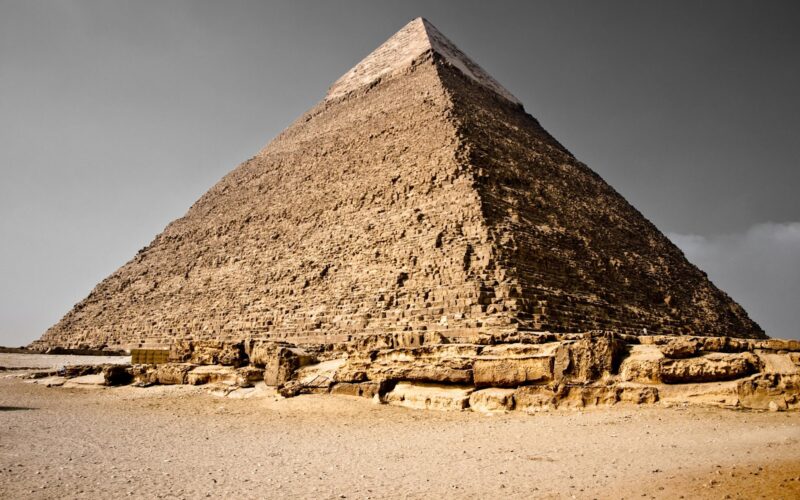A team of researchers from the University of North Carolina Wilmington believes they have unraveled the mystery of how Egypt’s iconic pyramids, including the Giza complex, were constructed over 4,000 years ago. Their findings suggest that the pyramids were built along an ancient, now-buried branch of the River Nile, previously unknown to modern scholars.
For years, archaeologists have hypothesized that ancient Egyptians used nearby waterways to transport the massive stone blocks needed for pyramid construction. However, the exact location, shape, and proximity of such a waterway to the pyramids had remained elusive. Professor Eman Ghoneim, one of the study’s authors, stated that until now, there was no certainty regarding these details.
The research team employed a combination of radar satellite imagery, historical maps, geophysical surveys, and sediment coring to map out this ancient river branch. Their study, published in the journal Nature, reveals that this branch, named the Ahramat branch (with “ahramat” meaning pyramids in Arabic), was buried under desert sands and farmland due to a significant drought and sandstorms thousands of years ago.
Using radar technology, the researchers were able to “penetrate the sand surface and produce images of hidden features,” including “buried rivers and ancient structures” near the locations of most of Egypt’s pyramids. This technological approach provided concrete evidence of the ancient waterway’s existence and its relevance to pyramid construction.
Dr. Suzanne Onstine, a co-author of the study, explained that the discovery of the river branch provides crucial data showing that a navigable waterway existed, which could have been used to transport heavy stone blocks, equipment, and workers to the pyramid sites. This finding helps elucidate the logistical aspects of pyramid construction that have puzzled historians for centuries.
The Ahramat branch was approximately 64 kilometers (39 miles) long and between 200 to 700 meters (656 to 2,296 feet) wide. This branch bordered 31 pyramids constructed between 4,700 and 3,700 years ago, explaining the high concentration of pyramids between Giza and Lisht, an area now part of the arid Saharan desert.
The research indicates that this river branch was “active and operational during the construction phase of these pyramids,” facilitating the transportation of heavy materials. Dr. Onstine emphasized that utilizing the river’s flow to move these blocks would have been much more efficient than relying solely on human labor.
The River Nile has been a crucial lifeline for Egypt since ancient times, and this discovery underscores its historical significance. The identification of the Ahramat branch not only helps explain the construction techniques of ancient Egyptian pyramids but also highlights the advanced engineering and logistical capabilities of the civilization.
This breakthrough provides a clearer understanding of how the ancient Egyptians might have harnessed natural resources to achieve their monumental architectural feats, offering fresh insights into one of history’s greatest engineering mysteries.








